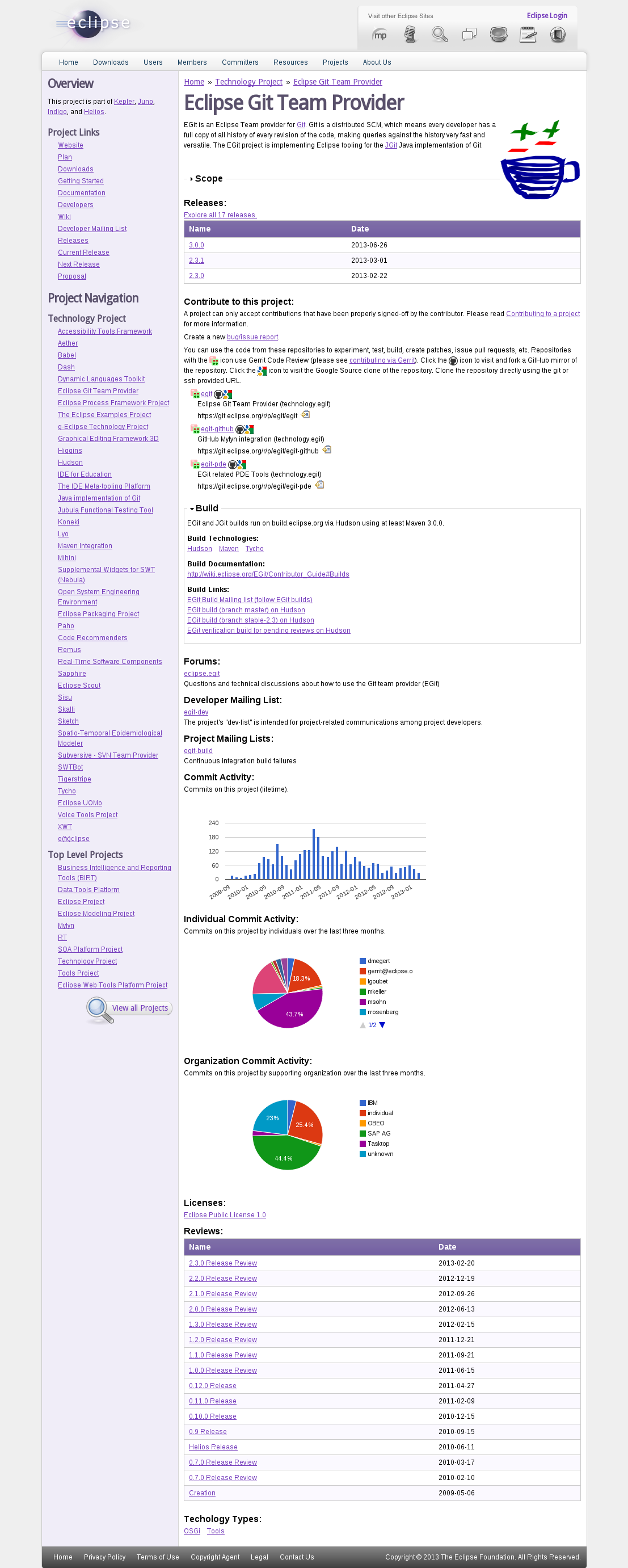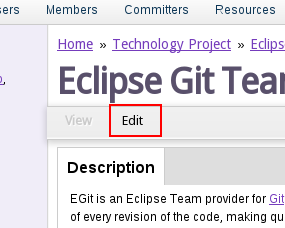Notice: this Wiki will be going read only early in 2024 and edits will no longer be possible. Please see: https://gitlab.eclipse.org/eclipsefdn/helpdesk/-/wikis/Wiki-shutdown-plan for the plan.
Difference between revisions of "Project Management Infrastructure/Project Metadata"
(→Viewing and Editing Project Metadata) |
|||
| Line 29: | Line 29: | ||
There is a lot more information displayed on this page. We'll fill in these details over the coming days and weeks. | There is a lot more information displayed on this page. We'll fill in these details over the coming days and weeks. | ||
| + | |||
| + | ==Project Home Page== | ||
| + | |||
| + | If you want to use this page as your project home page, change the contents of your project's ''index.php'' file to: | ||
| + | |||
| + | <?php | ||
| + | header("Location: http://projects.eclipse.org/projects/your.project.id"); | ||
| + | ?> | ||
| + | |||
| + | (with an appropriate substitution of ''your.project.id'', e.g. technology.egit, of course). | ||
| + | |||
| + | Note that the automatically-generated pages will continue to grow, change, and be updated. | ||
[[Category:Development_Resources]] | [[Category:Development_Resources]] | ||
[[Category:How to Contribute]] | [[Category:How to Contribute]] | ||
[[Category:Project Metadata]] | [[Category:Project Metadata]] | ||
Revision as of 12:15, 15 March 2013
Contents
What is Project Metadata?
- Relatively static structural information such as the project description and scope, the names of the project's mailing lists and newsgroups, the bugzilla products, source code repositories, etc.
- Historical information such as previous release downloads, release review slides and IP logs, etc.
- Status and future looking information such as the project and milestone plans, the features scheduled for the current release, release dates, etc.
Who maintains it?
Eclipse committers and project leads are responsible for maintaining their project's metadata. This information is an important part of being an Eclipse project.
Viewing and Editing Project Metadata
The complete listing of all current Eclipse projects provides one starting point for viewing projects. From here, you can link directly to a project information page. Navigation options are provided to help you move from one project to another.
Here is an example of a project page (visit the live project page).
If you are a project committer, you can authenticate with the system by clicking the "Login" link. Once logged in, you will have the ability to edit the information being displayed.
There are several sections on the page. When you switch the page into "Edit" mode, you will be provided with lots of help regarding the contents of each of the fields (note that the help text is currently rendered below the fields).
Description and Scope
At the top are the description and the scope. The description should be suitable for display with a collection of other projects (e.g. Use of Maven Build Technology). A single paragraph is generally appropriate for the description.
The scope is intended for a more select audience; generally speaking the scope should be taken directly from the project's proposal. Project members have the ability to change the text of the project scope, but should be careful to avoid changing the meaning. If the meaning of the scope needs to change, consult your PMC regarding a restructuring review.
More
There is a lot more information displayed on this page. We'll fill in these details over the coming days and weeks.
Project Home Page
If you want to use this page as your project home page, change the contents of your project's index.php file to:
<?php
header("Location: http://projects.eclipse.org/projects/your.project.id");
?>
(with an appropriate substitution of your.project.id, e.g. technology.egit, of course).
Note that the automatically-generated pages will continue to grow, change, and be updated.


